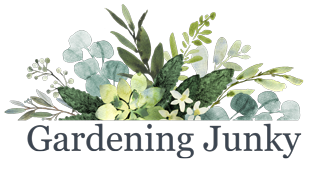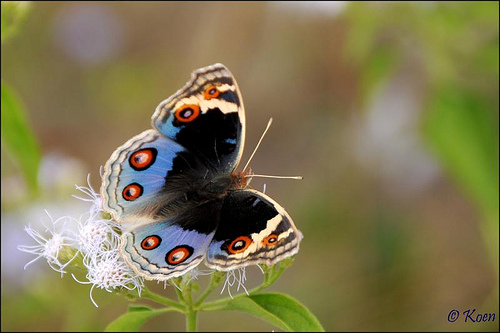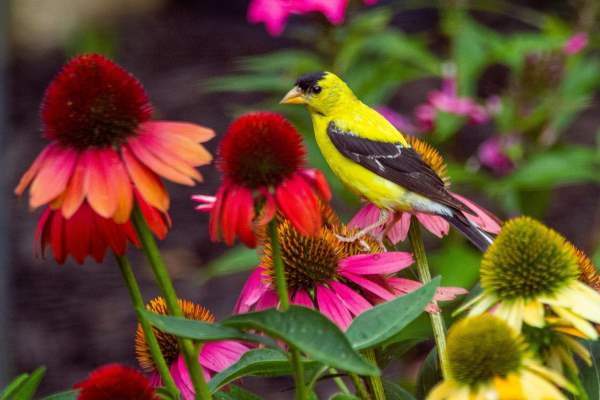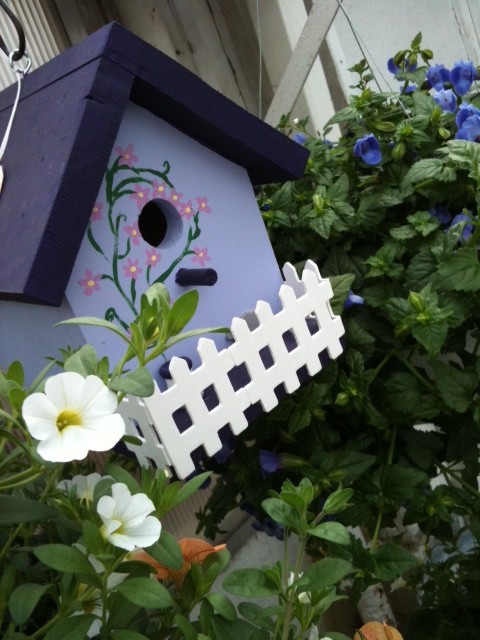Helping Birds Through The Winter: Feeding
a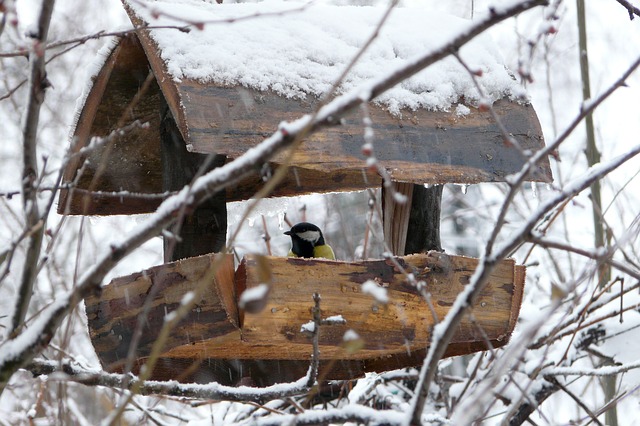
The days are getting shorter, and the temperatures are dropping. The leaves are changing colors and in the northern areas snowflakes have swirled in the air. Winter is coming and it is time to get serious about feeding the birds. Birds come to our feeders in the Spring, Summer and Autumn because they are convenient and have special treats.
Birds come to our feeders in the winter because they need the food. Many sources of their food have gone dormant for the winter. They also often have to battle with squirrels for food – especially any that humans put out in feeders. This is why it is important to try and squirrel-proof any feeders you buy.
So, you want to feed the birds, but you need a bird feeder. What kind of feeder do you buy? You need to answer a couple of questions. What type of birds winter in my area? What type of birds do I want to attract? Let’s look at the type of birdfeeders available and the birds they attract.
Platform Feeders: The Platform Feeder will attract a large number of birds both large and small. This type of feeder will also give the most unobstructed view of the birds. The versatility of platform feeders is one reason they attract such a large variety of birds. A platform feeder can be placed on or near the ground, placed on a pole or hung from a tree. In fact, platform feeders can even be placed under another feeder to catch the falling seed. Among the birds you can attract with a platform feeder are cardinals, titmice, juncos, jays, towhees, chickadees, native sparrows, and doves.
Platform feeders are difficult to squirrel proof. At best they can be made squirrel resistant. Some platform feeders have roofs that make it difficult for squirrels to enter the feeder. Others have a grate that fits over the birdseed so squirrels and other critters have a difficult time getting to the food. All platform feeders must have drainage holes, generally a grate in the bottom, to allow rainwater to drain out. If snow or sleet are a part of your Winter weather, you should consider a platform feeder with a roof. Some platform feeders, known as fly through feeders, have a built-in roof. You can also purchase a roof to fit over your feeder. For a wide variety of birds, you can’t beat a platform feeder.
Hopper Feeder: Hopper feeders are large and bird friendly, especially to large birds. Big birds like jays and woodpeckers are able to land on a hopper feeder and feed easily. In general, hopper feeders hold more bird seed than other feeders. Therefore, you don’t need to refill them as often. In freezing cold weather, it is nice to be warm inside knowing the birds have plenty of food outside. These feeders can also be very decorative, looking like a barn or a chalet. They frequently have suet feeders attached and this can increase the types of birds coming to the feeder. Squirrel-proofing these feeders can be accomplished by a using counter-balance system that closes the seed opening when a squirrel gets on the feeder.
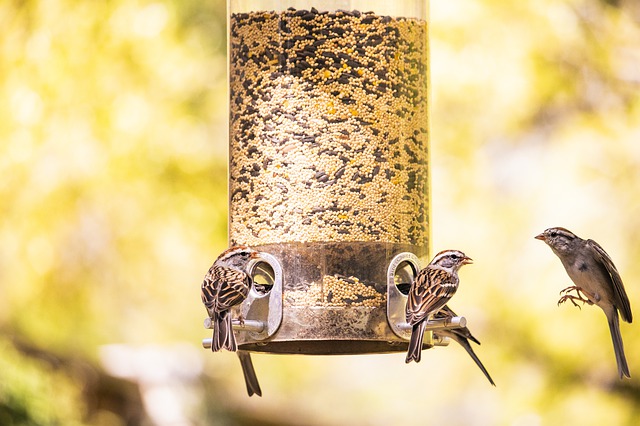
Tube Feeders: Tube feeders are the feeders seen most often in backyard. They are long tubes with feeding ports located along and around the tube and have short perches. Tube feeders attract chickadees, titmice, nuthatches, goldfinches and other small birds. Larger birds cannot use the short perches. Some tube feeders come with a cardinal ring or longer or lower perches to allow cardinals and grosbeaks to feed at the feeder. The feeders can be filled with sunflower seeds, thistle seeds, nyger, or special seed mixtures. Be certain that the seed you use is compatible with the seed ports. Sunflower seeds will not work in a nyger feeder.
The seeds in these feeders are protected from the weather so snow and sleet can’t get at the food. Tube feeders can be made squirrel proof by using the weight of the squirrel to close off the seed ports. Some tube feeders even have computer operated programs that realize when a squirrel is on the feeder and twirls or tips him off.
Globe Feeders: Globe feeders are less well-known than the others. They are for attracting small birds only like chickadees, nuthatches, goldfinches and titmice. This feeder looks somewhat like a clear ball hanging in your tree. They are sometimes called satellite feeders because they look like satellites. These feeders are perch-less, and the birds must cling to the bottom in order to eat. Globe feeders generally hang from a wire and spin when a bird lands on it. You can use any of a number of types of seeds or seed mixtures in this feeder. Being enclosed the food is protected from the elements. These feeders are squirrel resistant because squirrels have a difficult time hanging on the feeder. A baffle can be added above the feeder and squirrels are generally deterred from coming to this type of feeder.
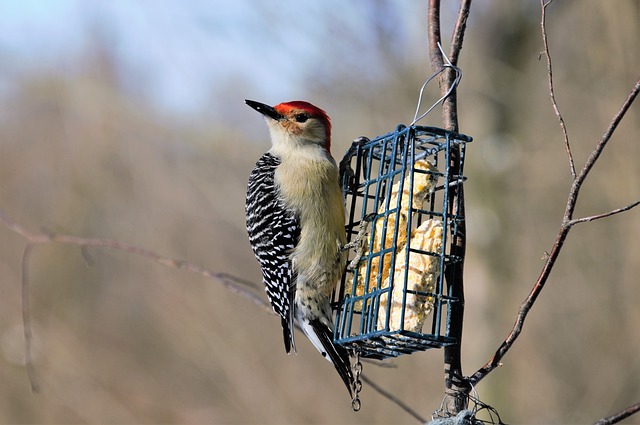
Suet Feeders: Suet is a wonderful addition to your winter birdfeeding regime. Suet contains energy rich nutrients and has a high fat content which helps the birds keep warm during the winter. Most birds will eat suet if they need additional energy, but woodpeckers, goldfinches, bluebirds, and juncos love suet. Suet feeders are simply wire cages into which a suet cake is slipped. Squirrels and other critters like suet too so you may want to add a baffle to deter the squirrels.
There are squirrel proof suet feeders which have an extra cage around the suet feeder. Suet may also be fed in a feeder with the opening on the bottom. Most birds will eat upside down, but starlings and squirrels will not. Suet feeders are frequently attached to the side of hopper feeders or other bird feeders. Suet feeders can be hung from the bottom of another feeder.
There are few things more pleasurable on a cold winter day than to sit inside with a hot cup of tea watching birds flock to your birdfeeders. The variety of birds is so very interesting and knowing that you have made them welcome in your yard brings a sense of contentment.
Article by: B J Clyde
B J Clyde is an avid birdwatcher and President of http://www.birdwatchersdepot.com.
